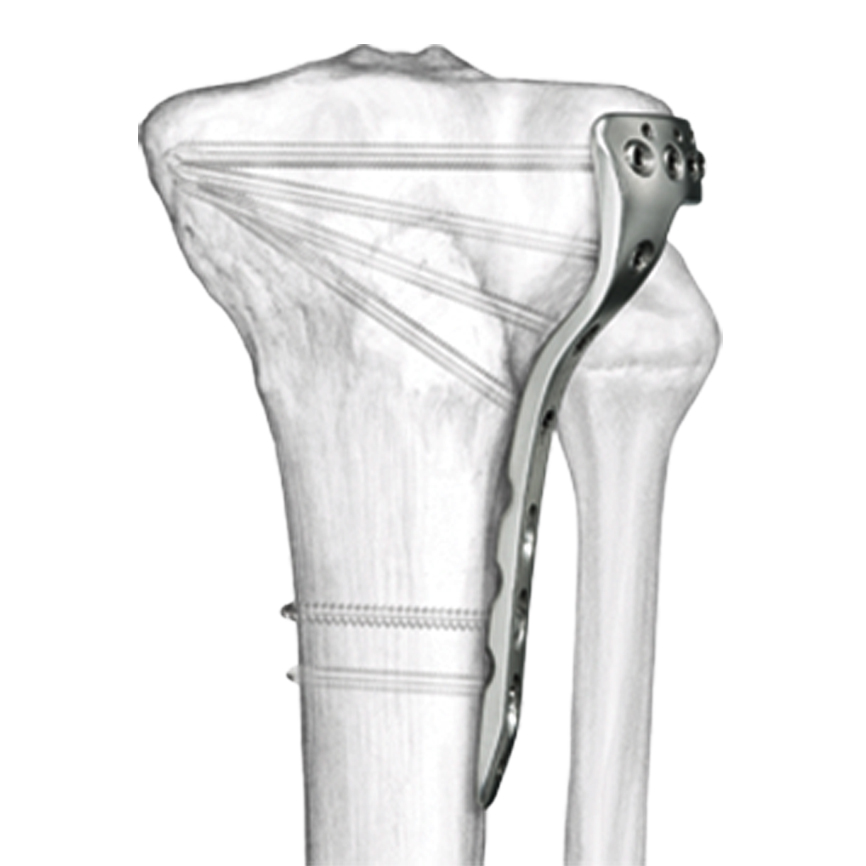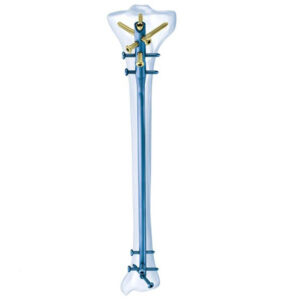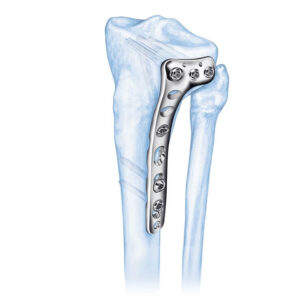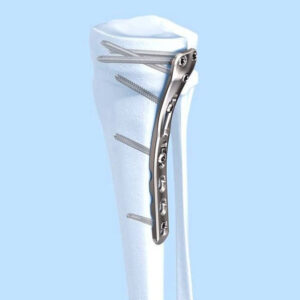The 3.5 mm LCP Proximal Tibia Plates have a limited-contact profile. The head and neck portions of the plates accept 3.5 mm StarDrive™ Recess Locking Screws. The screw hole pattern allows a raft of subchondral locking screws to buttress and maintain reduction of the articular surface. This provides resistance to local depression loads in addition to the stability of the fixed angle construct created by locking the screws into the plate.
The Synthes 3.5 mm LCP Proximal Tibia Plate and 3.5 mm LCP Proximal Tibia Plate, Low Bend are part of the Locking Compression Plate (LCP) System, which merges locking screw technology with conventional plating techniques. The Locking Compression Plate (LCP) has Combi-holes in the plate shaft which combine a dynamic compression unit (DCU) hole with a locking screw hole. The Combi-hole provides flexibility of axial compression and locking capability throughout the length of the plate shaft.
Available in left and right plates. Plates available in implant-quality 316L stainless steel or commercially pure (CP) titanium.






